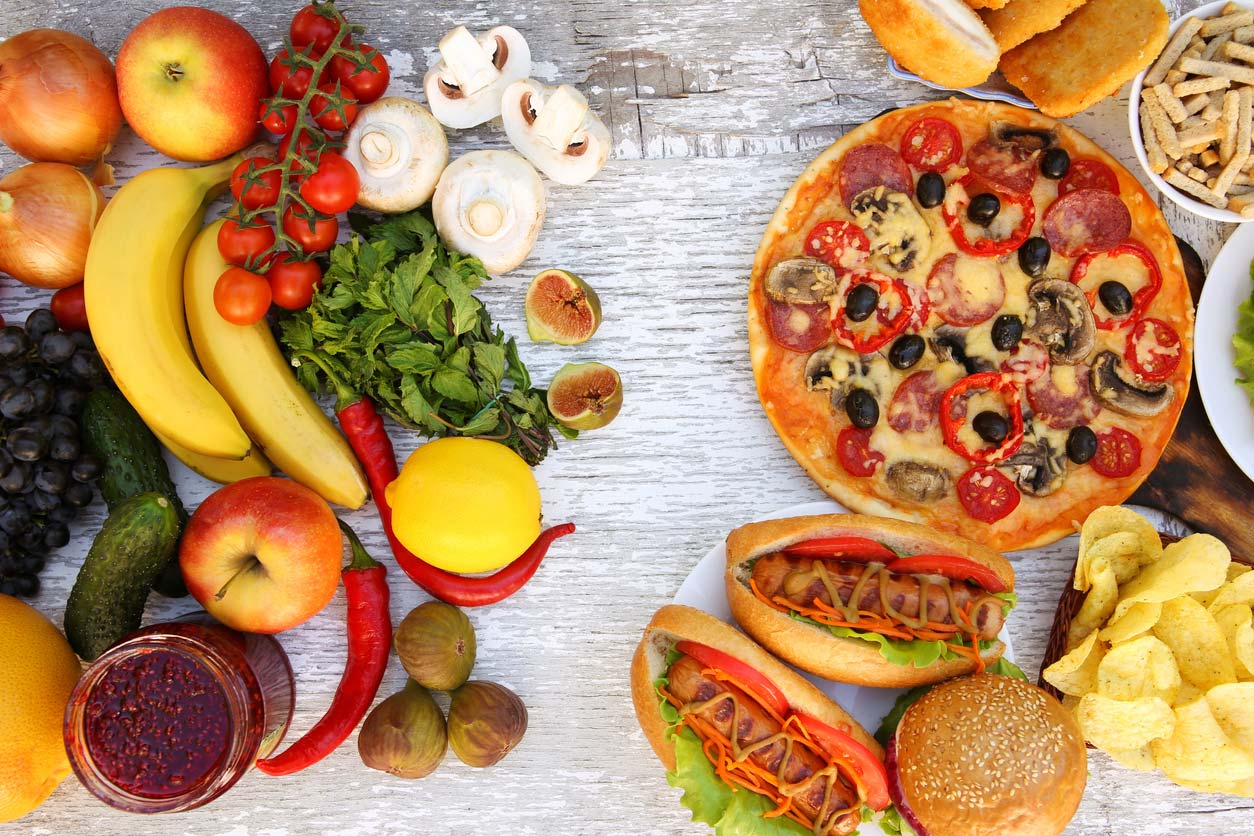
The medical profession treats arthritis like it treats most other diseases… with drugs.
Anti-inflammatories, pain relievers, and corticosteroids are among the most commonly prescribed drugs for arthritis management. This approach can provide relief from symptoms, at least for a while, but it doesn’t address the root causes of disease. No form of arthritis is caused by a “prescription drug deficiency.” And while there are many factors that contribute to the development, progression, and severity of arthritis, one of the most powerful – and fortunately within our control – is diet.
There are two dietary approaches to the management of arthritis: foods to get rid of, and foods to add. Certain foods appear to spark inflammation in the joints and are thus commonly referred to as trigger foods. Removing these foods from the diet can reduce pain and inflammation associated with arthritis.
Worst Foods for Arthritis

Some of the foods most likely to increase arthritis symptoms include:
Soda
Surveys among people with RA have found that sugary drinks like soda are one of the most reported foods for worsening symptoms. A 2014 observational study published in the American Journal of Clinical Nutrition examined the association between drinking sugary soda and risk of RA among women. The authors found that those women who drank at least one soda per day had a 63% increased risk of developing RA compared to those women who drank no soda or less than one can of soda per month. This was independent of other dietary and lifestyle factors, and the same correlation was not seen with diet soda intake.
Alcohol
While some older studies have suggested that there may be a link between moderate alcohol consumption and less severe arthritis symptoms, a 2019 study suggests that this is inaccurate. Instead, the 16,762 person study found that those with more severe disease progression were more likely to stop drinking alcohol altogether, giving the false appearance that it’s beneficial. In other words, the alcohol didn’t reduce arthritis; instead, the arthritis reduced alcohol consumption. Furthermore, alcohol is associated with hyperuricemia — high levels of uric acid in the blood — which may be associated with gout. It’s also known that alcohol doesn’t mix well with certain medications often used to alleviate arthritis symptoms; can disrupt sleep, promote weight gain and put further stress on aching joints; and damage mental health.
High-sugar Desserts
Similar to the effects of drinking sugary soda, eating high-sugar desserts may also worsen arthritis as evidenced by reports of this experience among people with the disease. What’s more, researchers have been examining Advanced Glycation Endproducts (AGEs), compounds formed as a result of high sugar intake that may play a role in the development of metabolic diseases and inflammation. AGEs can accumulate from inflammation and be present in people with RA, especially those with a long history of the disease, and may be an early warning sign of heart disease among people with RA.
Meat and Dairy
Meat and dairy products contain certain compounds that may play a role in worsening arthritis. A 2017 study published in Arthritis Care & Research assessed diet patterns and disease progression among 2,092 people with osteoarthritis in the knee for up to 4 years. The authors found that high intakes of total and saturated fat may be linked to worse osteoarthritis progression, while unsaturated fats may slow it. Another study found that people who ate over 75 grams of protein per day — especially when it included red meat — had three times the risk of inflammatory arthritis than people who ate fewer than 62 grams. Purine compounds, which can raise uric acid levels and contribute to gout, are highly concentrated in bacon, veal, turkey, certain fish, venison, and organ meats. Lastly, a 2018 study by the University of Central Florida found that a strain of bacteria in beef and milk, called Mycobacterium avium subspecies paratuberculosis (MAP), may trigger RA in people genetically at risk for the disease.
Gluten
There may be a link between Celiac disease and the development of RA, which many researchers think could be related to gut bacteria and intestinal health. In fact, gluten is an immunological trigger in both Celiac disease and RA, and many people with RA who follow a vegan, gluten-free diet report related benefits. Interestingly, research also suggests that people with Celiac disease may be at a higher risk for RA.
What’s the bottom line? In addition to all the other reasons, following a whole foods, minimally processed, plant-strong diet may reduce your risk, alleviate symptoms, and even slow the progression of arthritis. And of course, this goes hand-in-hand with avoiding processed, high-sugar foods, and animal-derived products associated with inflammation and reportedly worsened arthritic symptoms.
Nightshades and Arthritis
One of the most common things people think of as a “trigger food” is nightshade vegetables, such as tomatoes, peppers, eggplants, and potatoes. These vegetables contain solanine, which some people believe will aggravate arthritis pain and inflammation. And indeed, there are some anecdotal reports of arthritis symptoms improving on a no-nightshade diet. But the Arthritis Foundation reports that there have been no scientific studies that have demonstrated that nightshade vegetables actually cause inflammation or make arthritis symptoms worse.
If you are facing arthritis symptoms, then you might want to try omitting nightshades from your diet for a couple of weeks and slowly reintroducing them, to see if they have any impact on your pain level. Nightshade vegetables are rich in nutrients and provide many health benefits, so it’s best to experiment to find out whether removing them does you any good, rather than simply removing them without knowing whether that will produce any positive results.
Best Foods for Arthritis

So if you’re eliminating or cutting down on soda, alcohol, added sugar, animal products, and gluten, what should you replace them with? The simple answer is, with foods that fight inflammation. In other words, minimally processed plant foods. Studies have shown that plant-based diets can reduce symptoms or even eliminate arthritis completely in some people. For instance, a 2015 study published in the journal Arthritis found that just six weeks of a whole foods, plant-based diet significantly reduced self-reported osteoarthritis symptoms among participants aged 19-70, compared to a control group.
Some of the best foods for alleviating inflammation and reducing arthritis symptoms include:
Blueberries and Other Berries
A 2018 study published in Food & Function examined current evidence, including research from clinical studies, regarding the effectiveness of berries in reducing arthritis pain and inflammation. The authors concluded that blueberries, raspberries, and strawberries offered some of the best protection for arthritis, largely attributed to anti-inflammatory fruit polyphenols like quercetin, anthocyanins, and citrus flavonoids. Another 2018 study published in Arthritis Care & Research evaluated survey responses from 217 participants regarding their diet and arthritis symptoms. The authors found that blueberries were one of the foods most often reported to improve symptoms.
Spinach
The same Arthritis Care & Research study mentioned above found that in addition to blueberries, consuming spinach was also very often attributed to an improvement in arthritis symptoms by survey participants. Test tube research suggests that spinach has anti-osteoarthritic effects that appear to target cartilage cells. For a long time, gout sufferers were told to avoid spinach, as its high levels of purines might trigger an attack. However, a 2012 study found that while animal foods rich in purines were associated with five times the risk of attack, plant-based purine-rich foods did not increase gout incidence or severity.
Foods High in Omega-3 Fats
Some of the richest sources of plant-based omega-3 fats are flax seeds (freshly ground for best nutritional value), chia seeds, hemp seeds, certain forms of algae, and walnuts. This type of fat has been shown to reduce swelling, tenderness, and morning stiffness of joints among people with rheumatoid arthritis. A 2016 study found so much improvement among arthritis symptoms among people who took a daily omega-3 supplement that many were able to reduce their need for pain medications. Algal oil, derived from algae, is a vegan source of the omega-3 fats EPA and ALA, and has been found to be equally well-absorbed and tolerated as cooked salmon but without all the mercury and other contaminants found in fish products.
Citrus Fruits
Polyphenols like hesperidin and naringenin, found in citrus fruits such as oranges, lemons, and limes, have been found to help reduce the inflammation that can worsen arthritis symptoms. A 2016 study published in Clinical Rheumatology assessed the impact of dietary choices on the risk of developing RA among a Chinese population. The authors found that RA patients tended to have a low intake of citrus fruits, indicating that there might be a correlation between citrus fruit intake and susceptibility to arthritis.
Garlic
Garlic is a pungent food in the allium family. It’s known to be one of the best natural medicines for alleviating arthritis, largely due to its anti-inflammatory organosulfur compounds.
Mushrooms
Mushrooms have long been used in traditional medicine to alleviate a number of conditions with their natural anti-inflammatory compounds. Even the run-of-the-mill white button variety appears to have the potential to reduce the incidence and severity of arthritis in animal studies, though more research is needed. Note that some mushrooms may contain vitamin D, an important nutrient that may be helpful for arthritis due to its immune-boosting properties. Studies have found low levels of vitamin D among people with osteoarthritis and that vitamin D deficiency has been linked to the most debilitating symptoms of RA. Keep in mind that the form in mushrooms is vitamin D2, which is less bioavailable than vitamin D3. The most reliable way to get vitamin D is from the sun, or with a vitamin D3 supplement, but some mushrooms can be beneficial as well.
Turmeric
The main polyphenol found in turmeric, called curcumin, has been heavily studied for its anti-inflammatory and antioxidant properties. One study found that 8–12 weeks of standardized turmeric extracts (the equivalent of taking approximately 1000 mg/day of curcumin) could be as effective as pain medication in reducing arthritic symptoms. Note that taking curcumin on its own has not been shown to be very effective. Taking it with piperine (the main active component in black pepper), or with other bioavailability enhancements such as micelle liposomal delivery, has been found to increase absorption.
Ginger
Known for its anti-inflammatory properties, ginger may help reduce pain from osteoarthritis and RA. Some compounds found in ginger may act like a COX-2 inhibitor, which corresponds to the way that some arthritis medications work to relieve pain. A meta-analysis of 5 studies, published in Osteoarthritis and Cartilage in 2015, found that people with osteoarthritis who took ginger reduced their pain by 30%, and their disability by 22%, compared with control groups.
Cinnamon
Derived from tree bark, cinnamon contains cinnamaldehyde and cinnamic acid, compounds with anti-inflammatory and antioxidant properties that may be beneficial for arthritis. A study published in the Journal of the American College of Nutrition found that 500 mg per day of cinnamon supplementation for 8 weeks was helpful in reducing RA symptoms among 36 women with the disease. There are many forms of cinnamon available. Ceylon cinnamon is the healthiest type.
In addition, the Physicians Committee for Responsible Medicine offers a list of “pain-safe” foods that are not at all associated with arthritis pain. These include rice; cooked green, orange, and yellow vegetables; and cooked or dried non-citrus fruits.
https://foodrevolution.org/blog/best-and-worst-arthritis-foods/?utm_source=ontraport&utm_medium=email&utm_campaign=blo-2020&utm_content=arthritis-food-frn-members&utm_term=variant-1-of-2




Комментариев нет:
Отправить комментарий